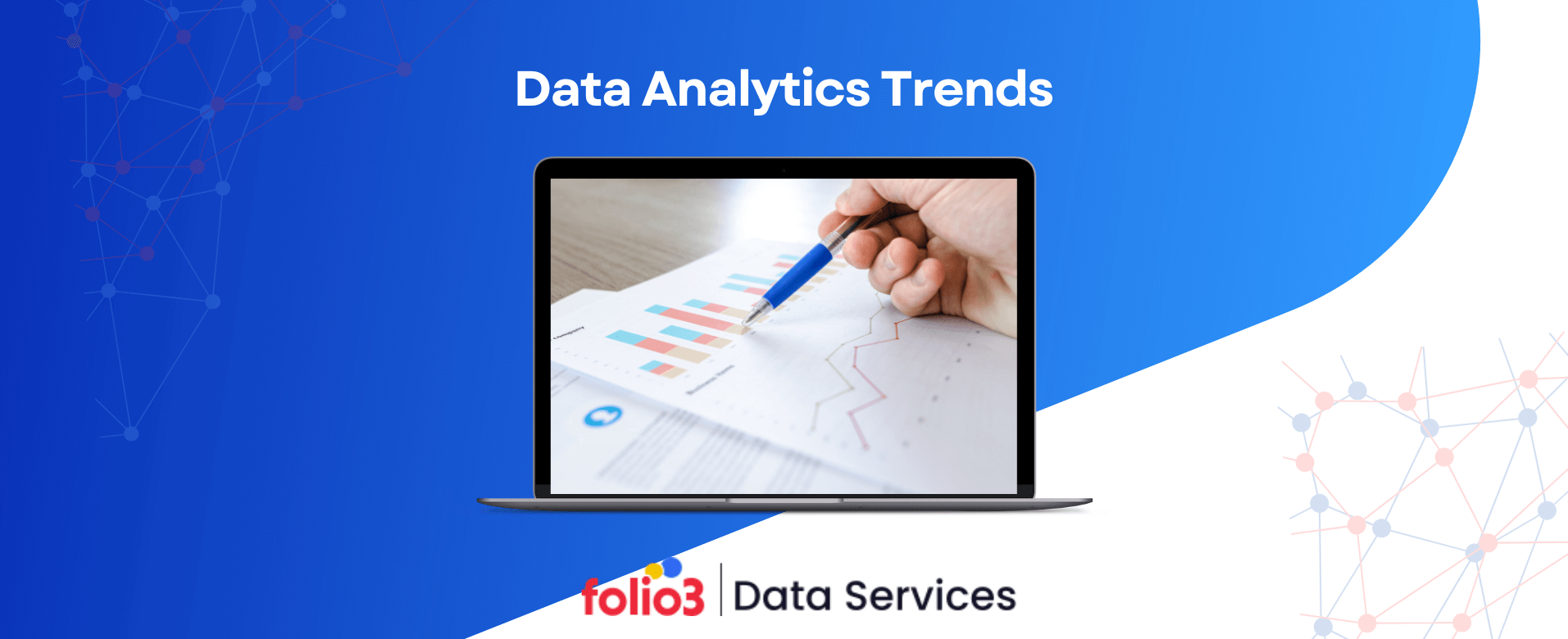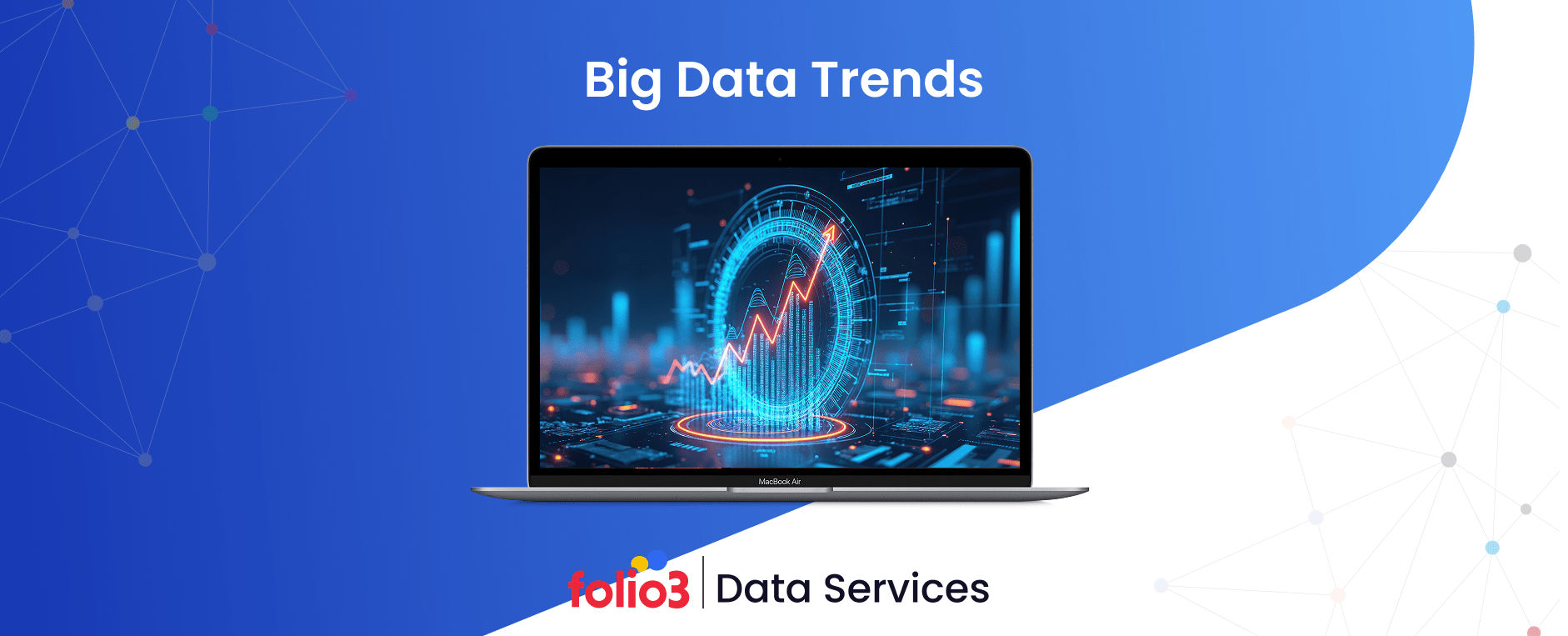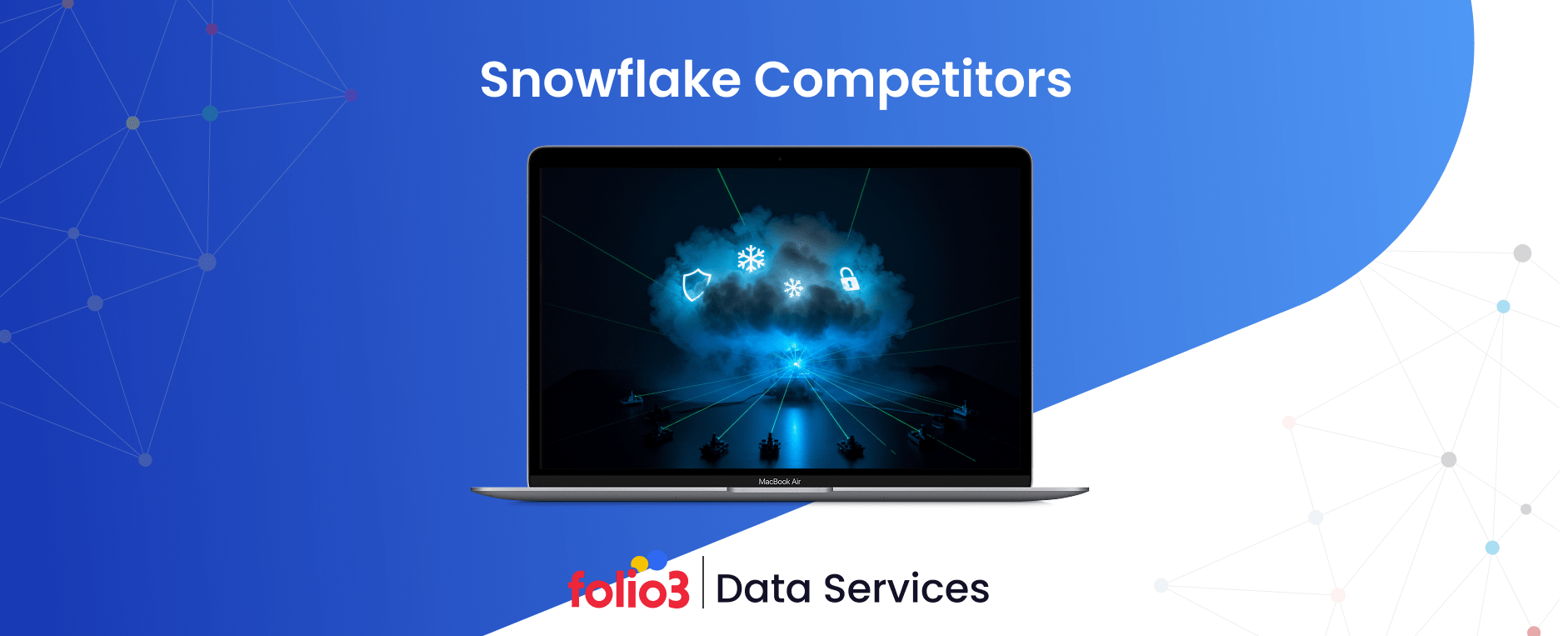Data analytics is no longer just a buzzword; it has become essential to modern business strategy. In an era where vast amounts of data are generated every second, organizations must harness the power of data analytics to stay competitive.
Understanding the latest trends in data analytics helps businesses uncover valuable insights, optimize operations, and drive growth. As we look ahead, the data analytics landscape continues to evolve, driven by emerging technologies and the increasing need for more agile, real-time decision-making.
This article will explore the most important data analytics trends, highlighting innovations shaping industries and transforming how we analyze and use data.
Key Takeaways
- Implementing AI in Data Analytics
- Using Business Intelligence to Gather Insights
- Edge Computing for Real-Time Data Processing
- Data Mesh Architecture
- Data Democratization
- Data Privacy and Security
- Edge Analytics and IoT
- Sustainability in Data Analytics
- Generative AI in Data Visualization
- Ethical AI and Analytics
Why Staying Updated on Trends is Crucial?
Data analytics constantly changes, and staying updated on the latest trends is critical for businesses aiming to maintain a competitive edge. As technology advances and new tools emerge, processing larger datasets, gaining deeper insights, and making faster decisions becomes more manageable.
Staying on top of these trends allows businesses to identify opportunities for improvement, drive innovation, and enhance overall efficiency. Additionally, the rapid pace of change means that failing to adapt can result in missed opportunities and, ultimately, business stagnation. With advancements in artificial intelligence (AI), big data, and edge computing, keeping up with these trends is more important than ever.
Overview of Current Market Dynamics Driving Innovation
The data analytics industry is experiencing a significant shift driven by several key market dynamics. The need for real-time data processing, fueled by the rise of the Internet of Things (IoT), has placed a premium on advanced analytics solutions.
Additionally, businesses increasingly leverage AI and machine learning (ML) to enhance decision-making and automate processes. Moreover, integrating robust security measures has become a priority as data privacy concerns intensify.
The convergence of these factors, technological advancements, the demand for real-time insights, and the growing focus on data privacy propels innovation in data analytics.
What is Data Analytics?
Data analytics involves inspecting, cleaning, transforming, and modeling data to uncover valuable insights, draw conclusions, and support decision-making. It encompasses various techniques and technologies, including statistical analysis, predictive modeling, and machine learning.
With data being generated at an unprecedented rate, organizations are turning to advanced analytics to derive actionable insights from large and complex datasets. Whether improving customer experience, optimizing supply chain management, or predicting market trends, data analytics is at the core of informed decision-making and strategic planning.
10 Emerging Data Analytics Trends
Data analytics is constantly evolving, with new technologies and methodologies emerging to meet the growing demands of businesses across industries. As organizations seek to harness the full potential of their data, staying on top of these emerging trends is essential.
From artificial intelligence to edge computing and data democratization, the latest advancements in data analytics enable businesses to gain deeper insights, make real-time decisions, and drive innovation.
Here are some of the most impactful trends shaping the future of data analytics:
1. Implementing AI in Data Analytics
Artificial intelligence is rapidly transforming data analytics, enabling businesses to analyze massive datasets faster and more accurately. AI-driven analytics can automate the process of data analysis, identifying patterns and generating insights that would be time-consuming or even impossible for humans to uncover. For instance, AI tools can analyze customer data from e-commerce platforms to detect purchasing behaviors, predict trends, and offer personalized product recommendations.
According to a recent survey by McKinsey, companies that leverage AI-driven analytics experience a 20% improvement in operational efficiency.
AI also drives advancements in predictive modeling, enabling businesses to anticipate future trends, mitigate risks, and optimize resource allocation for more innovative, data-backed decisions.
2. Using Business Intelligence to Gather Insights
Business Intelligence (BI) is at the forefront of modern data analytics, providing organizations with real-time tools to consolidate, analyze, and visualize data from multiple sources. BI platforms are essential for companies to monitor performance, track key metrics, and identify improvement opportunities or areas.
Retailers, for example, use BI tools as part of their data analytics strategy to analyze sales data, customer demographics, and inventory levels, which inform inventory management, pricing, and marketing decisions. A prominent use case is Walmart’s use of BI to optimize its supply chain and reduce waste by analyzing sales data to predict demand for specific products at various locations.
As BI tools evolve, they incorporate machine learning (ML) and natural language processing (NLP) to provide more granular insights. For example, BI platforms now allow users to ask natural language queries like, “Which region had the highest sales growth this quarter?” and receive instant responses based on real-time data analysis.
3. Edge Computing for Real-Time Data Processing
Edge computing is revolutionizing real-time data processing by enabling businesses to process data closer to where it is generated, reducing latency and improving speed. This is especially important in healthcare, manufacturing, and logistics industries, where real-time data is essential for quick decision-making and operational efficiency.
For instance, edge computing is used in autonomous vehicles to process sensor data on the car itself to make immediate decisions about navigation, obstacles, and speed adjustments. This reduces the reliance on cloud computing, which may offer a different response than the instant response required for such time-sensitive decisions.
Similarly, in healthcare, wearable devices use edge computing to monitor vital signs in real-time, sending alerts only when necessary to medical professionals rather than transmitting all the data to the cloud. According to a report by Statista, the global edge computing market is projected to reach $43.4 billion by 2027, growing at a CAGR of 38.4%.
4. Data Mesh Architecture
As organizations grow and deal with more complex datasets, traditional centralized data architectures often need to be more convenient and efficient. The concept of data mesh introduces a decentralized approach to data architecture, which promotes the distribution of data ownership across various business domains.
In a data mesh model, teams can manage their data within their respective domains, ensuring faster access and more relevant insights.
This approach helps companies overcome issues like data silos and enables scalable, cross-functional data analytics.
For example, companies like Netflix and Uber have successfully adopted data mesh principles, allowing them to scale their data operations and improve decision-making across different departments. With data mesh, these companies can reduce bottlenecks caused by centralized data management, making their data infrastructure more agile and responsive.
A recent Forrester report highlighted that organizations implementing data mesh see up to a 50% reduction in the time required to access critical data across teams, improving operational efficiency and business agility. Partnering with a trusted data engineering services company can help businesses adopt such modern architectures, ensuring seamless implementation and governance across domains.
5. Data Democratization
Data democratization is the process of making data accessible to everyone within an organization, not just to data scientists and analysts. By empowering all employees to engage with data, businesses foster a data-driven decision-making culture.
Tools like self-service Business Intelligence (BI) platforms allow non-technical users to generate reports and insights without relying on IT teams or specialized data professionals. This trend is particularly valuable for organizations looking to unlock the full potential of their data, as it enables business leaders and operational teams to make informed decisions based on data at their fingertips.
For instance, companies like Tableau and Microsoft Power BI have significantly promoted data democratization by offering user-friendly interfaces and drag-and-drop functionalities that allow users to interact with data independently. A study by IDC revealed that businesses embracing this approach see a 30% increase in decision-making speed. Many analysts link this surge in adoption to the strong data analytics industry growth projection, which signals expanding opportunities and motivates organizations to broaden access to data.
6. Data Privacy and Security
As data analytics grows in its role in shaping business operations, safeguarding the privacy and security of that data has become more crucial than ever. With data breaches becoming increasingly common and regulations like GDPR (General Data Protection Regulation) and CCPA (California Consumer Privacy Act) imposing stricter guidelines, businesses must ensure they handle data responsibly.
Organizations invest in cutting-edge security technologies such as encryption, anonymization, and blockchain to protect sensitive information from cyber threats. In addition, compliance with data protection laws is now standard practice, helping businesses maintain customer trust while leveraging data insights.
A report by Deloitte indicated that 87% of companies now prioritize data privacy and security, with many implementing dedicated roles like Chief Data Privacy Officers (CDPOs) to ensure compliance with evolving regulations. Maintaining robust data privacy and security helps businesses avoid costly fines and ensures the safe use of data for analytics, fostering trust with customers and clients.
7. Edge Analytics and IoT
Edge analytics, combined with the Internet of Things (IoT), is revolutionizing manufacturing, agriculture, and healthcare industries by enabling real-time data processing closer to the source. With IoT devices continuously generating vast amounts of data, edge analytics processes this data at the network’s edge, reducing latency and enabling quicker decision-making.
In agriculture, for example, IoT sensors embedded in crops can monitor soil conditions and weather patterns in real-time, allowing farmers to take immediate action to optimize crop yields. In healthcare, wearable devices track patient vitals, such as heart rate and blood pressure, and send alerts in case of abnormal readings, leading to faster medical interventions.
According to a report by McKinsey, industries that adopt edge analytics with IoT experience a 20-30% improvement in operational efficiency due to faster decision-making and more accurate real-time data processing. Edge analytics and IoT are also becoming crucial in industries like logistics, where real-time tracking of shipments and fleet management systems is driving operational efficiency.
8. Sustainability in Data Analytics
Sustainability is increasingly embedded in data analytics as organizations seek to mitigate environmental impact. As global concerns about climate change and resource depletion rise, companies leverage data analytics to drive sustainable practices across various industries.
For example, businesses in the energy sector use data analytics to monitor power consumption patterns, enabling them to optimize energy use, reduce waste, and minimize their carbon footprint. In agriculture, data analytics is used to maximize water usage, predict crop yields, and reduce the ecological impact of farming practices.
Furthermore, data analytics helps businesses identify waste reduction and resource conservation opportunities, which align with environmental goals and consumer demand for sustainable products. A study by PwC found that 56% of businesses have incorporated sustainability analytics into their operations, with companies in the energy and agriculture sectors leading the charge in using data to make more sustainable decisions.
9. Generative AI in Data Visualization
Generative AI transforms data visualization by automating the creation of complex data’s insightful, customized visual representations. Unlike traditional data visualization tools that require manual configuration of charts and graphs, generative AI can automatically generate visuals based on the type of data being analyzed, adapting to the user’s needs.
This capability allows businesses to easily create dynamic visualizations that help them uncover patterns and trends that may not be visible with static charts. For example, gen AI in data analytics can create heatmaps or flow diagrams based on sales trends, customer behavior, or website traffic, offering a deeper, more nuanced understanding of the data.
Additionally, generative AI reduces the time and effort required to create these visuals, enabling data teams to focus on analysis rather than design. According to a study by Deloitte, businesses that incorporate generative AI into their data visualization processes see a 35% increase in productivity, as the automated generation of visuals leads to quicker insights and more efficient communication of data findings.
10. Ethical AI and Analytics
As AI becomes more ingrained in data analytics, ethical considerations surrounding its use are gaining increased attention. Concerns about bias, fairness, and transparency in AI algorithms are prompting organizations to develop ethical frameworks for implementing AI in data analytics.
Ethical AI ensures that algorithms are fair, unbiased, and transparent in their decision-making processes, essential for maintaining public trust and mitigating potential harm. For example, when AI is used in hiring processes, ethical AI frameworks ensure that the algorithms do not favor specific demographics or perpetuate historical biases in candidate selection.
Similarly, in lending, AI algorithms must be designed to make impartial decisions that do not unfairly discriminate against applicants based on race, gender, or socioeconomic background. In healthcare, AI-powered diagnostic tools must be transparent and based on equitable data to ensure accurate and fair patient results.
Industries such as energy are also adopting responsible practices, ensuring that innovations like digital oilfield solutions balance efficiency gains with fairness, transparency, and sustainability considerations.
According to a survey by Accenture, 72% of executives say that ethical considerations, including fairness and transparency, are essential when implementing AI, and 64% have implemented measures to address AI bias. The growing demand for ethical AI practices highlights the importance of accountability and fairness as AI plays a more significant role in data-driven decision-making across industries.
How Folio3 Enables Success Through Data-Driven Analytics
At Folio3, we help organizations unlock the full value of their data through our data-driven analytics services. By combining AI-powered insights, advanced analytics, and real-time data processing, we enable businesses to make informed decisions, optimize operations, and drive innovation.
From data collection and integration to analysis and visualization, our holistic approach ensures actionable insights at every stage of the data journey, helping companies achieve sustainable growth and a competitive edge.
Final Words
The data analytics industry is rapidly evolving, with new technologies and methodologies constantly reshaping how businesses approach data. Partnering with top data analytics companies ensures organizations can stay informed about the latest trends in data analytics, enabling them to leverage data for growth, innovation, and efficiency.
As businesses continue to maximize the power of data, those who stay ahead of these trends will be well-positioned to thrive in an increasingly data-driven world. Using the emerging trends in data analytics, organizations can unlock deeper insights, drive better decision-making, and stay competitive in their respective industries.



